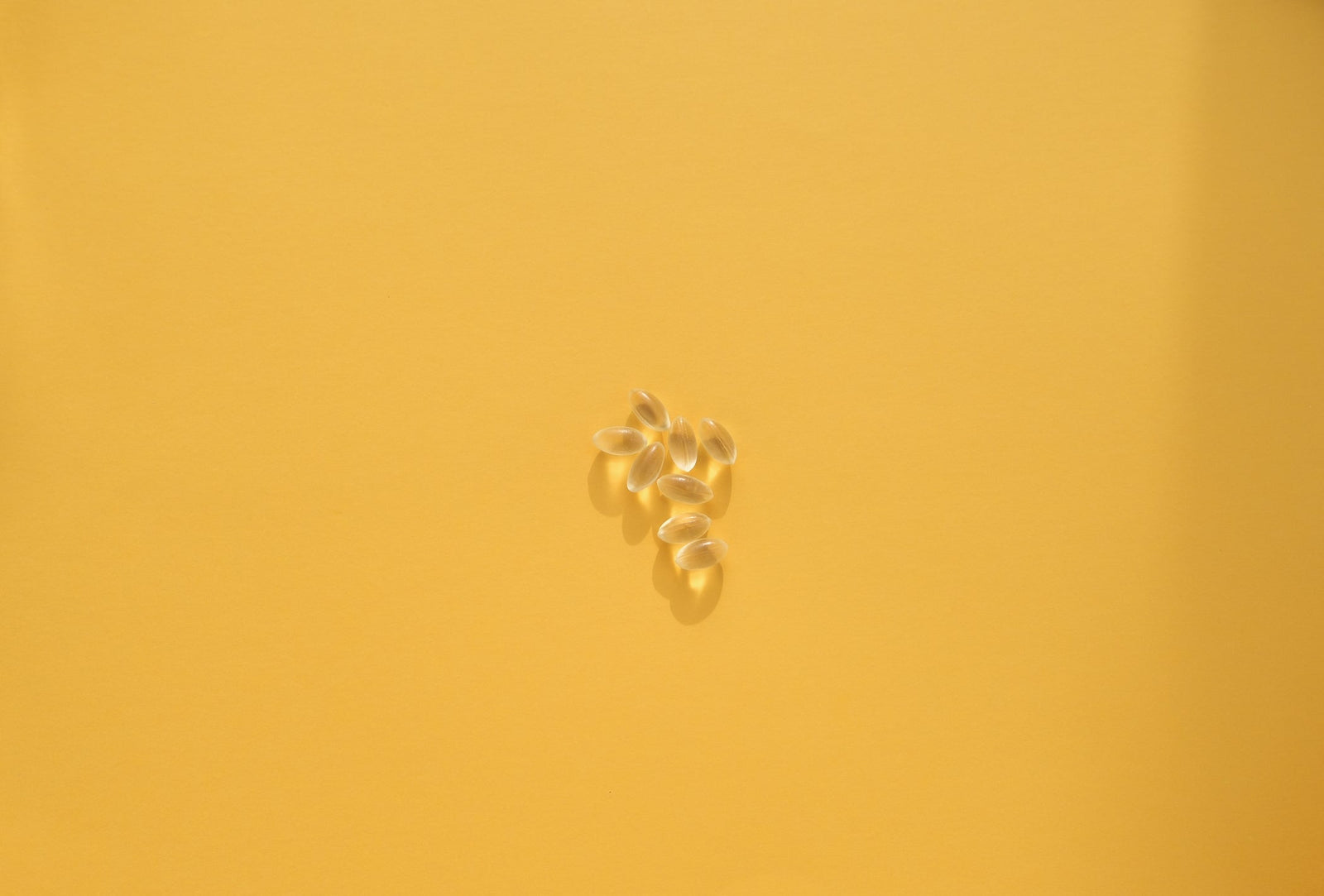Your Cart is Empty

September 09, 2024 6 min read
Take our quiz and find which supplements your body is craving.

September marks new beginnings, a change of season, pumpkin spice lattes, and long-awaited crisp air. It also raises the question of polycystic ovary syndrome (PCOS) diagnosis—a topic many women struggle with year-round. The National Polycystic Ovary Syndrome Association recognizes September as PCOS Awareness Month, highlighting the importance of understanding this complex condition.
One of the leading causes of female infertility, PCOS affects approximately six million women in the U.S. alone[1]. Since the root causes of PCOS t are not yet specified, diagnosing it can be a challenge. In this guide, we will discuss the common PCOS symptoms, management options, and the importance of PCOS awareness.
PCOS affects women in their reproductive years and is characterized by multiple cysts forming on the outer ovary wall.These cysts are filled with fluid that contains immature eggs, also known as follicles. The follicles cannot release the eggs, compromising ovulation. While the mechanisms of this condition are well-researched, the root cause of PCOS still hasn’t been determined.[2]
This disorder affects up to 15% of the female population worldwide. In addition to cysts forming, PCOS manifests in a few more abnormalities[3]:

While the exact cause of PCOS hasn’t been pinpointed, scientists have recognized significant risk factors. One is the genetic component, an important contributor to many medical disorders. Genomic studies have found that certain susceptibility genes, in combination with environmental factors, can largely contribute to the development of PCOS.[3]
Therefore, the known causes and contributors to PCOS development include[3]:
Not every case of irregular periods is synonymous with PCOS, and not every PCOS case will manifest through increased period intensity and frequency. It is, however, very common for polycystic ovaries to disrupt the menstrual cycle, making it extremely unpleasant, unpredictable, or even absent.[5]
PCOS has also been associated with changes in skin health, often triggering skin tags, hyperpigmentation, acne, and increasing sebum production. In turn, many women diagnosed with this condition struggle with an oily, problematic complexion. Due to increased androgen production associated with polycystic ovaries, even women who have never experienced skin issues may develop acne.
If you’ve noticed excessive body hair growth, it may also result from excess male hormones. Hirsutism, or excess hair growth, is one of the main manifestations of polycystic ovary syndrome and can begin as early as puberty.[5]
To make matters worse, the boosted hair growth mainly affects the face and body, while women suffering from PCOS may experience thinning scalp hair and even pattern baldness. Androgenic alopecia, caused by excess testosterone levels, is a common hair-related issue associated with this condition.[6]
Weight gain and its role in PCOS can be examined from both sides of the spectrum, as it can be the cause just as much as the symptom. In the majority of cases, women who have PCOS deal with increased insulin production or insulin dysfunction. This kind of scenario increases the chances of weight gain, while obesity also promotes the likelihood of polycystic ovaries.[7]
Polycystic ovary syndrome has also been associated with poor mental health, especially if the patient has a negative body image due to the mentioned changes. Depression, anxiety, and confusion women deal with in this stage may seriously affect their sleep rhythm, self-esteem, social relationships, and quality of life.[8]
Finally, PCOS is related to numerous other health issues, including cardiovascular problems, high cholesterol, hypertension, infertility, and type 2 diabetes.

Your OBGYN will confirm that the symptoms you’ve been experiencing indeed point to PCOS if at least two of these statements are true[8]:
In addition to the ultrasound scan, your doctor will request a blood test to analyze hormone levels. While hormonal fluctuations aren’t identical in every PCOS case, the most common instances include raised levels of testosterone, estrogen, luteinizing hormone, anti-mullerian hormone, and insulin.[8]
So, what makes PCOS diagnosis so complex?While the ultrasound may seem like the most reliable method, some cases of polycystic ovaries may not even show fluid-filled sacs on the scan. What’s more, symptoms commonly associated with this disorder, including heavy menstrual bleeding, might also be caused by issues such as polyps, uterine fibroids, and pelvic inflammatory disease.[8]
In addition, irregularities in ovulation patterns and menstrual periods attributed to PCOS can be a consequence of puberty, menopause, use of certain medications, or even stress. This is precisely why so many women are misdiagnosed, or their symptoms aren’t taken seriously.[8]
Mood swings, painful periods, and hormonal fluctuations women deal with every month are often brushed off and minimized. We are constantly reminded that struggling with female health comes as a “part of the package,” and we just have to endure it.
In reality, heavy and crippling periods, an influx of negative thoughts, and compromised body image should not be taken lightly. PCOS is a multilayered, deeply rooted problem that impacts both physical and mental health. While it still may not be completely understood, it is no longer a complete mystery, and women need to join the conversation about their reproductive well-being.
During September, PCOS Challenge: The National Polycystic Ovary Syndrome Association organizes events, offering resources and crucial information for the affected women. PCOS Awareness Month aims to break the stigma surrounding women’s health and provide scientifically-backed information that can improve patients’ lives. Find out more about upcoming events on their website.
Living with PCOS doesn’t have to be life-altering. However, you may have to alter your lifestyle to truly notice positive changes and hopefully reverse this condition in the future.
Promising methods include:
Polycystic ovary syndrome isn’t a topic that should be pushed under the rug. Its complexity should only be motivation to speak on it louder than ever—and this is precisely the aim of PCOS Awareness Month. If you’ve checked off most of the mentioned symptoms but haven’t been diagnosed yet, don’t hesitate to schedule a doctor’s appointment and do the necessary tests.
If, on the other hand, you’ve already been diagnosed with PCOS, remember that small lifestyle changes can sometimes make the biggest difference. In addition to your doctor’s recommendations, listening to your body and prioritizing both mental and physical well-being is essential.

April 08, 2025 7 min read
Discover the powerful trio for graceful aging—Vitamin D3+K2 and Omega-3 fatty acids. This dynamic combination supports bone strength, heart health, immune function, and reduces inflammation, helping you maintain vitality and well-being as you age.

March 20, 2025 8 min read
Discover the benefits of creatine for women with Amandean’s Creatine HCI. Improve strength, energy, recovery, and cognitive function with this high-absorption formula. Its advanced HCl form ensures easy digestion and no bloating, providing all the benefits without the drawbacks. Elevate your fitness journey and overall wellness with a supplement designed for women’s unique needs.

March 03, 2025 7 min read
Discover how Bryan Johnson, a tech entrepreneur turned biohacker, uses cutting-edge science and personalized genetic testing to revolutionize health and longevity. Learn how biohacking, from diet to mental health practices, can help you live longer and healthier, with practical strategies to optimize your well-being. Find out more about genetic testing, and ways to implement results into your wellness routine.